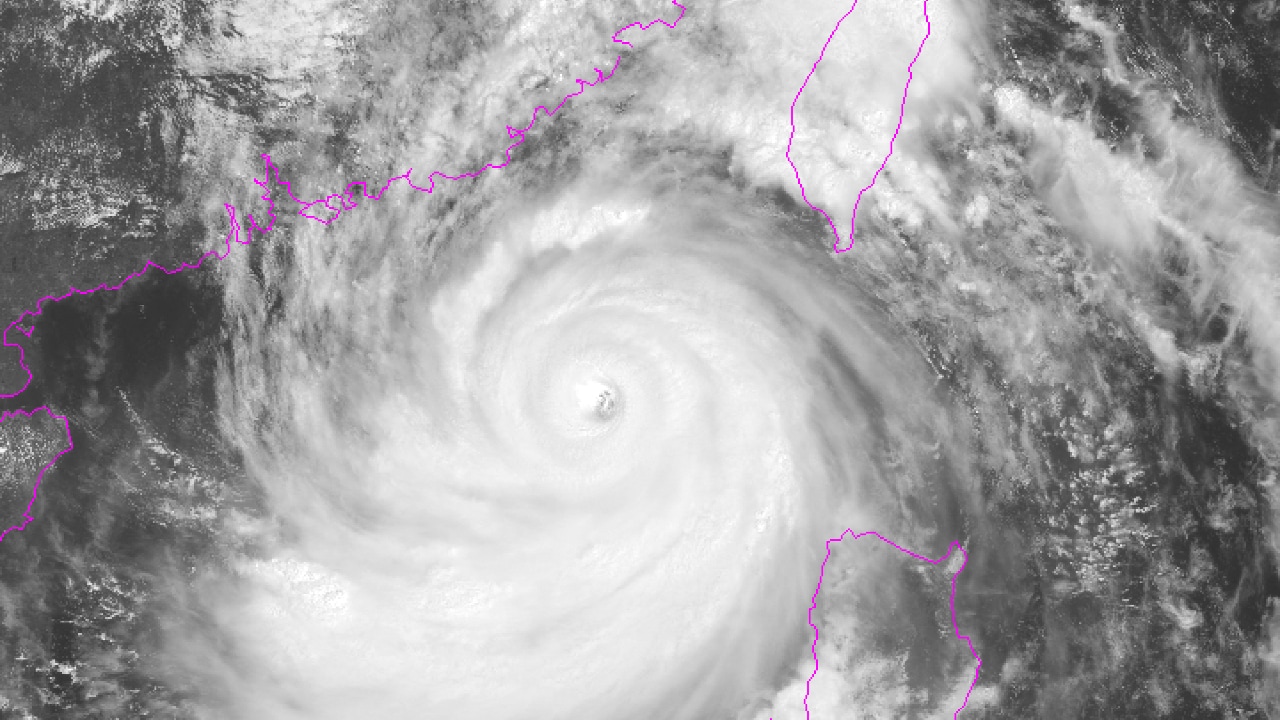
Super Typhoon Ragasa Kills 17 in Taiwan, Batters Hong Kong, Now Heads Toward China
Light House Denver – Super Typhoon Ragasa devastated East Asia, killing 17 in Taiwan after rains caused a decades-old lake barrier in Hualien County to burst. The collapse triggered massive flooding, injuring 18 others and displacing hundreds. Officials described the disaster as one of the worst weather-related incidents in the region in recent years.
The typhoon had already claimed two lives in the northern Philippines before tearing across Taiwan, further intensifying as it made its way toward Hong Kong and mainland China.
On Wednesday, Hong Kong was lashed by fierce winds, torrential rain, and storm surges that flooded multiple districts. Videos circulating online showed glass doors at the upscale Fullerton Ocean Park Hotel shattering as water rushed into its lobby. Another clip captured powerful waves sweeping through the seaside Heng Fa Chuen residential estate, inundating courtyards and surrounding roads.
“Continue Reading: Wild Rumors Surround Yu Menglong’s Death, 3 People Arrested by Beijing Police”
According to the Hong Kong Observatory, Ragasa brought a “significant storm surge,” with water levels rising more than three meters above normal. The observatory had issued the city’s highest-level typhoon warning overnight, cautioning residents to remain indoors.
Authorities reported widespread flooding, fallen trees, and structural damage. Strong winds ripped the roof off a pedestrian footbridge, while many of Hong Kong’s skyscrapers swayed under hurricane-force gusts.
Public transportation ground to a halt as train services on open-air routes were suspended, leaving only limited underground service. The usually bustling airport cancelled hundreds of passenger flights, with only a few cargo operations allowed.
Over 760 people sought safety in 50 temporary shelters provided by the government. Meanwhile, a tragic accident occurred in the Chai Wan district, where a five-year-old boy and his mother fell into the sea while watching waves. Both remained in critical condition, while the father, who leapt into the water to save them, was hospitalized as well.
Local residents expressed both fear and resilience. “This one was forecast to be quite bad, so we were expecting chaos,” said Benjamin Phizacklea, a 27-year-old chef. “But everywhere seems to be functioning quite efficiently still.” Others, like long-time coastal resident Yang Lee-o, prepared with sandbags and emergency supplies.
Macau also faced significant flooding, with utility company CEM cutting electricity in low-lying areas to prevent further damage. Across the border in mainland China, authorities in Guangdong province prepared for Ragasa’s landfall between Zhuhai and Zhanjiang.
The Ministry of Emergency Management ordered school and business closures in at least 10 cities, affecting tens of millions of people. In Zhuhai, residents of high-rise buildings were evacuated to nearby hotels and shelters. China’s marine authority issued its first red wave warning of the year, highlighting the severity of the storm.
In Shenzhen, a tech hub with more than 17 million residents, 400,000 people were evacuated as officials instructed citizens to stay indoors. Similar emergency measures were implemented in other Guangdong cities, including Chaozhou, Dongguan, and Foshan.
Authorities suspended rail travel across southern China, leaving once-busy stations eerily empty, while in Yangjiang near the expected landfall, residents deserted the streets as winds intensified. “I don’t know if I’ll even open my shop today,” said a local convenience store owner.
Businesses and residents have been warned of severe flooding, strong winds, and prolonged disruptions. With millions sheltering indoors, many stocked up on food and water. “I’m nervous about losing power or fresh water in our estate,” said Terence Choi, a Hong Kong resident who prepared two days’ worth of supplies.
Hong Kong’s deputy leader, Eric Chan, compared Ragasa’s intensity to the devastating super typhoons of 2017 and 2018, which caused hundreds of millions in property damage. Scientists warn that such storms are becoming stronger and more destructive as climate change accelerates. Warmer oceans and shifting weather patterns fuel the rapid intensification and increased frequency of super typhoons in the region.
For now, Typhoon Ragasa continues its path toward China’s southern coast, threatening tens of millions more people with life-threatening winds, flooding, and landslides. Authorities remain on high alert, urging residents to prioritize safety above all else.
As communities in Taiwan and Hong Kong begin assessing the damage, the scale of recovery will likely be enormous. Yet amid the destruction, stories of resilience, quick evacuations, and neighborly solidarity highlight the region’s determination to endure nature’s most powerful storms.
“Read More: Tokyo Welcomes the All-New Apple Ginza on September 26”
This information is sourced from theguardian. Super Typhoon Ragasa devastated East Asia, killing 17 in Taiwan after rains caused a decades-old lake barrier in Hualien County to burst. Read the full article on LightHouseDenver.
|Author: Lukman Azhari
|Editor: Anna Hidayat